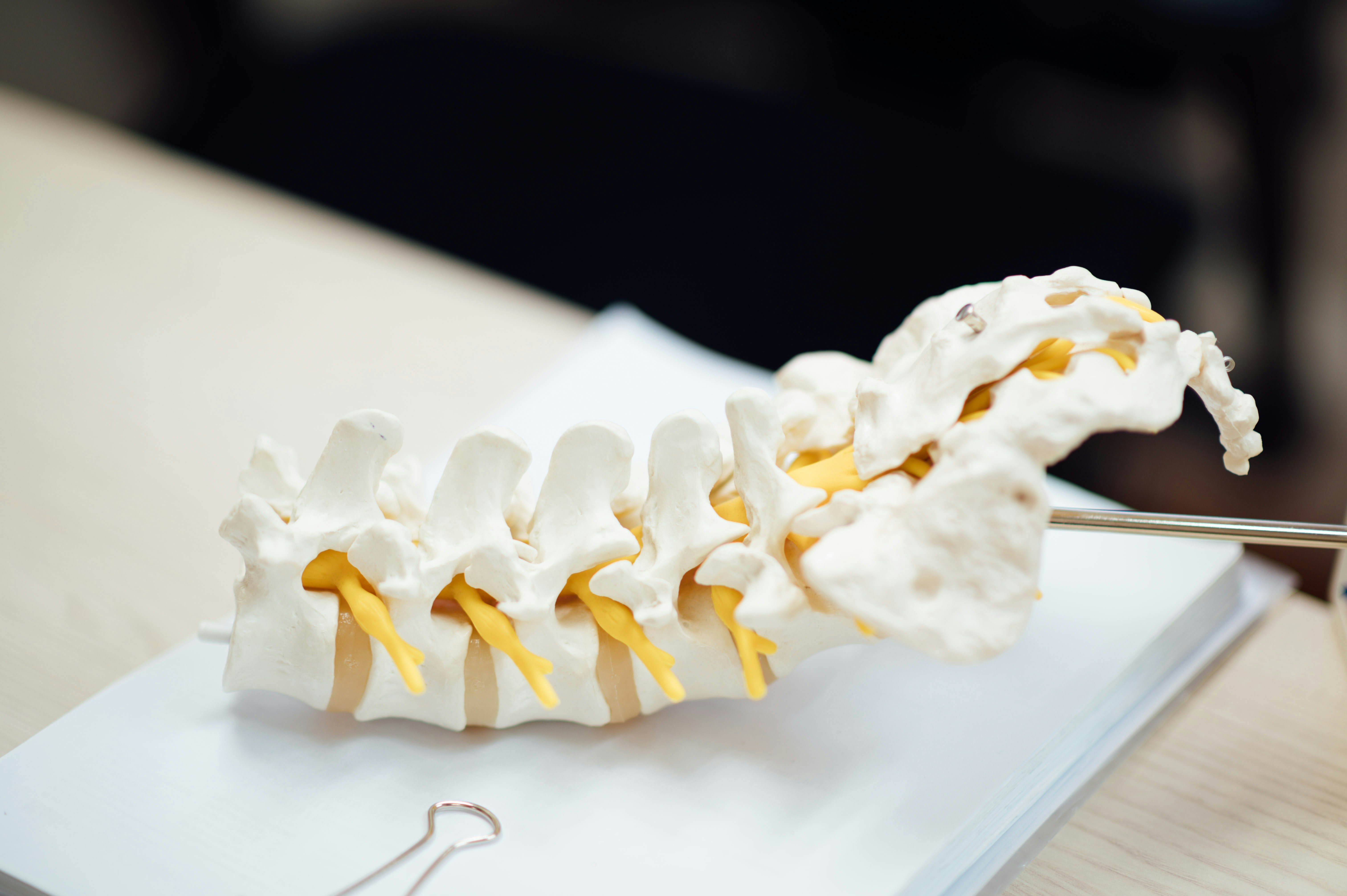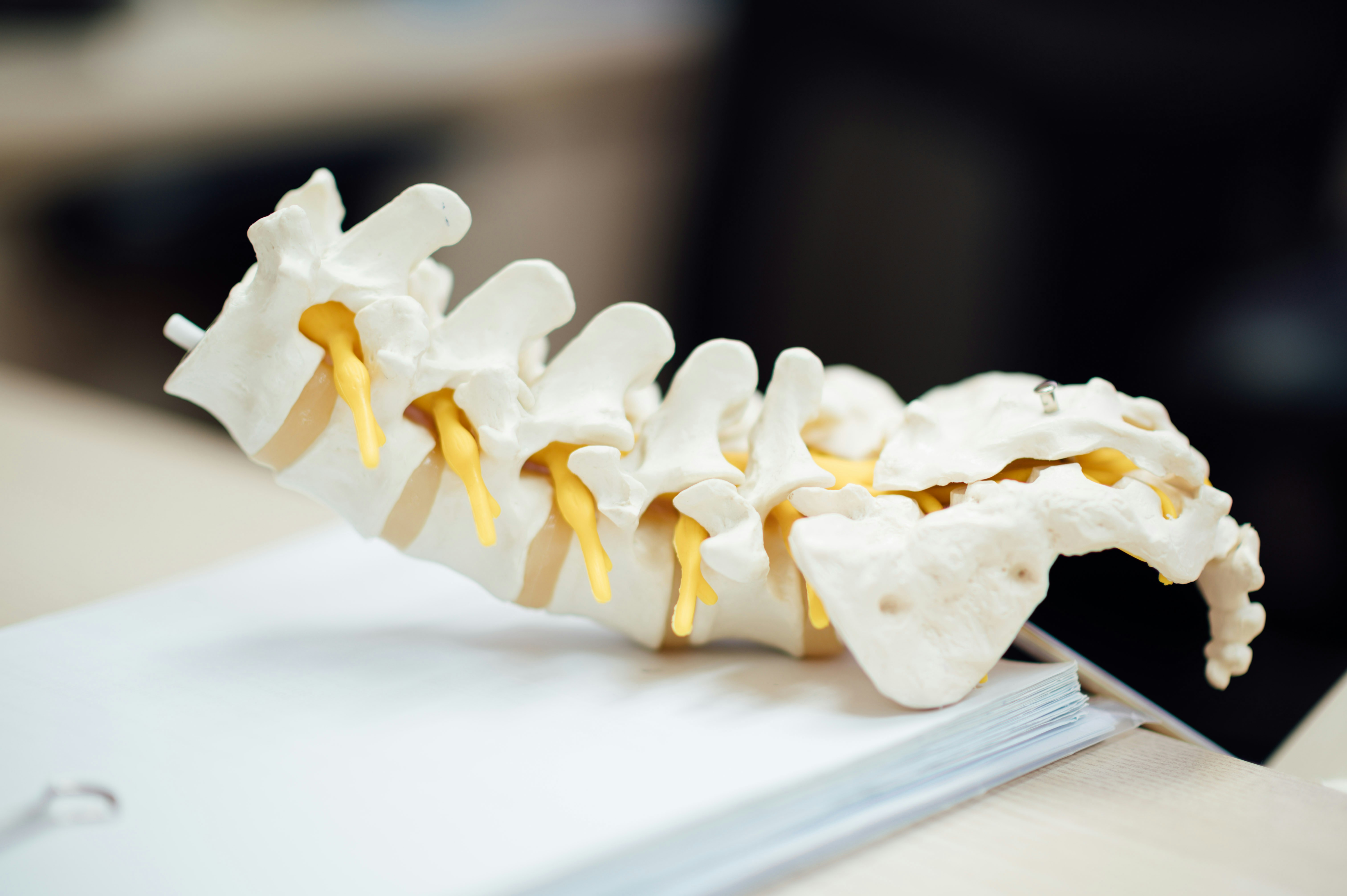Learn about wedge fractures in the spine, their causes, symptoms, and available treatment options. Understand how to prevent future fractures.
In this article, we will be discussing wedge fractures in the spine and how they can affect your health. You will learn about what a wedge fracture is, the causes of this type of injury, and the potential symptoms that can arise. We will also explore the available treatment options and provide tips for preventing wedge fractures in the future. By the end of this article, you will have a better understanding of wedge fractures in the spine and how to manage them effectively.
What is a Wedge Fracture in the Spine?
A wedge fracture in the spine refers to a specific type of fracture that occurs in one or more vertebrae, the bones that make up the spinal column. This type of fracture is characterized by compression and collapse of the front portion of the vertebral body, resulting in a wedge-shaped appearance. Wedge fractures can occur in any region of the spine, including the cervical (neck), thoracic (mid-back), and lumbar (lower back) regions.
Definition of a Wedge Fracture
A wedge fracture is commonly defined as a compression fracture that occurs at the anterior (front) portion of a vertebra. It is called a wedge fracture because the collapse of the vertebral body creates a triangular or wedge-shaped appearance. This type of fracture is typically caused by a sudden forceful impact or excessive stress on the spine, leading to the collapse of the vertebral body.
Causes of Wedge Fractures
There are several common causes of wedge fractures in the spine. The most frequent cause is a traumatic injury, such as a fall from a height, a motor vehicle accident, or a sports-related injury. Osteoporosis, a condition characterized by weakened bones due to loss of bone density, is another significant cause of wedge fractures in older adults. Other causes may include tumors in the spine, infections, or other underlying bone diseases.
Symptoms and Signs of a Wedge Fracture
The symptoms and signs of a wedge fracture can vary depending on the severity and location of the fracture. Common symptoms include localized pain in the back, which may worsen with movement or activity. Since the fracture affects the stability of the spine, individuals may experience difficulty maintaining an upright posture or have a noticeable change in their spinal curvature. In severe cases, where the fracture affects the spinal cord, symptoms may include numbness, tingling, or weakness in the limbs.
Types of Wedge Fractures
Wedge fractures in the spine can be further classified into different types based on their location and extent of the vertebral body collapse.
Anterior Wedge Fracture
The anterior wedge fracture occurs when the front portion of the vertebral body collapses, causing an angular deformity. This type of fracture is the most common form of wedge fracture and is often associated with stable vertebral fractures. The collapse typically involves the anterior two-thirds of the vertebral body, resulting in a wedged appearance.
Middle Wedge Fracture
The middle wedge fracture is characterized by a collapse that involves the middle portion of the vertebral body. This type of fracture may occur due to an axial compressive force that is applied directly on the spine. The collapse of the middle portion of the vertebral body creates a wedge-shaped deformity, similar to the anterior wedge fracture.
Posterior Wedge Fracture
The posterior wedge fracture is a less common type of wedge fracture that involves the collapse of the posterior (back) portion of the vertebral body. This type of fracture is often accompanied by other types of vertebral fractures and may indicate more severe trauma or injury to the spine.
Diagnosis of Wedge Fractures
Proper diagnosis and assessment of a wedge fracture in the spine are essential for determining the appropriate treatment approach. The diagnosis typically involves a combination of physical examination, imaging tests, and differential diagnosis.
Physical Examination
During the physical examination, your healthcare provider will assess your range of motion, strength, and sensation in your limbs. They will also evaluate your spinal alignment, looking for any visible deformity or abnormalities. The physical examination helps to identify any neurological deficits or significant dysfunction associated with the wedge fracture.
Imaging Tests
Imaging tests play a crucial role in the diagnosis of wedge fractures. X-rays are often the initial imaging modality used to assess the structure and alignment of the spine. X-rays can help identify the collapse of the vertebral body and determine the severity of the fracture. However, additional imaging tests such as computed tomography (CT) scans or magnetic resonance imaging (MRI) may be necessary to provide more detailed information about the fracture, its location, and any associated spinal cord or nerve root compression.
Differential Diagnosis
Differential diagnosis involves ruling out other conditions that may present with similar symptoms to a wedge fracture. Conditions such as spondylolisthesis, herniated disc, or spinal tumors may mimic the symptoms of a wedge fracture. A thorough evaluation, including imaging and clinical assessment, helps differentiate between these conditions and accurately diagnose a wedge fracture.
Treatment Options for Wedge Fractures
The treatment options for wedge fractures in the spine depend on several factors, including the severity of the fracture, the patient’s overall health, and the presence of any associated complications.
Conservative Approach
Conservative treatment approaches are typically recommended for stable wedge fractures with minimal or no neurological deficits. This approach may include rest, pain medication, and the use of orthotic devices such as braces or supports to stabilize the spine. Physical therapy may also be prescribed to improve mobility and strengthen the surrounding muscles.
Bracing and Support
Bracing or support devices can provide stability and help relieve pain in patients with wedge fractures. These devices are designed to limit movement in the affected area, allowing the fracture to heal properly. Braces are often worn for a specific period, depending on the severity of the fracture, and may be gradually discontinued as the fracture heals and the patient’s pain improves.
Surgical Interventions
In cases of severe wedge fractures with significant spinal instability or neurological deficits, surgical intervention may be necessary. Surgical options may include spinal fusion, vertebroplasty, or kyphoplasty. Spinal fusion involves the fusion of the affected vertebrae using bone grafts and metal instrumentation to provide stability. Vertebroplasty and kyphoplasty are minimally invasive procedures that involve injecting bone cement into the fractured vertebrae to restore height and reduce pain.
Rehabilitation and Recovery
Rehabilitation and recovery are crucial components of the treatment process for wedge fractures in the spine. The goals of rehabilitation are to restore function, reduce pain, improve mobility, and prevent complications.
Physical Therapy
Physical therapy plays a vital role in the rehabilitation of wedge fractures. A physical therapist will develop an individualized treatment plan that may include exercises to improve strength, flexibility, and posture. Physical therapy can also focus on pain management techniques and activities to improve balance and coordination.
Occupational Therapy
Occupational therapy may be recommended to assist patients in regaining their ability to perform daily activities. An occupational therapist can provide strategies and adaptations to help patients with tasks such as dressing, bathing, and cooking. They may also assess the need for assistive devices or home modifications to ensure a safe and independent living environment.
Preventing Complications
Preventing complications is an essential aspect of rehabilitation for wedge fractures. Complications may include ongoing pain, reduced mobility, or recurrent fractures. Following a proper rehabilitation program, adhering to lifestyle modifications, and maintaining regular follow-up with healthcare providers can help minimize the risk of complications and promote long-term recovery.
Complications of Wedge Fractures
Although wedge fractures can often be managed effectively, some complications may arise in certain cases.
Neurological Complications
In severe wedge fractures, spinal cord compression can lead to neurological complications such as paralysis or impaired sensory function. Prompt diagnosis and treatment of the fracture can help prevent or minimize these complications. In cases where a neurological deficit is present, surgical intervention may be necessary to decompress the spinal cord and restore function.
Long-term Effects
Wedge fractures, especially in the elderly population, can have long-term effects on a person’s quality of life. Chronic pain, reduced mobility, and a decrease in overall activity level may contribute to a decline in physical and emotional well-being. Proper management and rehabilitation can help alleviate these long-term effects and improve the quality of life.
Risk of Future Fractures
Individuals who have experienced a wedge fracture are at an increased risk of future fractures, especially if they have underlying osteoporosis or other bone-related conditions. Preventive measures such as lifestyle modifications, proper nutrition, and regular exercise can help reduce the risk of future fractures and promote optimal bone health.
Prevention and Lifestyle Modifications
Prevention and lifestyle modifications play a crucial role in reducing the risk of wedge fractures in the spine.
Maintaining Healthy Bones
To prevent wedge fractures, it is important to maintain healthy bones. This can be achieved through a combination of factors, including regular weight-bearing exercises, adequate calcium and vitamin D intake, and avoiding tobacco and excessive alcohol consumption. Regular bone density screenings can also help detect early signs of osteoporosis and guide appropriate interventions to maintain bone health.
Proper Nutrition
Eating a balanced diet rich in calcium, vitamin D, and other essential nutrients is essential for maintaining strong and healthy bones. Incorporating foods such as dairy products, leafy green vegetables, and fortified cereals can help meet the body’s nutritional needs for optimal bone health.
Exercise and Fall Prevention
Regular exercise, specifically weight-bearing and resistance training exercises, helps strengthen bones and muscles, improving overall bone density and reducing the risk of fractures. Additionally, practicing fall prevention techniques, such as using assistive devices, removing hazards in the home, and maintaining proper lighting, can help reduce the risk of falls and associated wedge fractures.
Understanding Wedge Fracture in Different Age Groups
Wedge fractures can occur in individuals of all age groups, but certain factors may contribute to their occurrence in specific populations.
Pediatric Wedge Fractures
In pediatric patients, wedge fractures are often the result of high-impact injuries, such as those sustained during sports or recreational activities. Children and adolescents are generally more resilient, and their bones have better healing capacity compared to adults. Treatment may involve strict immobilization, casting, or bracing, with emphasis on proper monitoring and follow-up to ensure healthy bone growth.
Adult Wedge Fractures
In adults, wedge fractures are commonly seen in individuals with osteoporosis or those involved in high-energy trauma, such as motor vehicle accidents or falls from significant heights. Treatment options may vary depending on the severity of the fracture, the presence of associated injuries, and the patient’s overall health status. Adequate pain relief, rehabilitation, and lifestyle modifications are important facets of adult wedge fracture management.
Geriatric Wedge Fractures
Geriatric patients, especially those with osteoporosis, are particularly susceptible to wedge fractures. These fractures can significantly impact an individual’s functional independence and overall quality of life. Treatment may involve a multidisciplinary approach, focusing on pain management, fall prevention, rehabilitation, and support to optimize recovery and prevent recurrent fractures.
Research and Advancements in Wedge Fracture Management
Researchers and medical professionals are continuously striving to enhance the understanding and management of wedge fractures in the spine.
Current Studies
Ongoing studies are exploring various treatment modalities for wedge fractures, including the use of minimally invasive techniques, advanced imaging technologies, and new biomaterials to improve outcomes and reduce complications. These studies aim to further refine treatment algorithms and provide evidence-based guidelines for optimal patient care.
Emerging Treatments
Emerging treatments for wedge fractures include the use of biologic agents to stimulate bone healing and enhance fracture repair. These therapies may hold promise in further accelerating the healing process and reducing the risk of complications.
Technological Innovations
Technological innovations, such as computer-assisted surgery and robotic-assisted surgery, have the potential to revolutionize the management of wedge fractures. These advanced techniques can aid in precise fracture reduction, improving surgical outcomes and patient satisfaction.
Conclusion
Understanding wedge fractures in the spine is essential for early diagnosis, appropriate treatment, and improved patient outcomes. Whether caused by traumatic injury or underlying bone conditions, wedge fractures can significantly impact an individual’s quality of life. By recognizing the symptoms, seeking prompt medical attention, and adhering to an appropriate treatment plan, individuals can optimize their recovery and minimize the risk of complications. Furthermore, lifestyle modifications and preventive measures should be implemented to reduce the risk of wedge fractures and promote optimal bone health. With ongoing advancements in research and technology, the management of wedge fractures continues to evolve, providing hope for improved treatments and ultimately enhancing the lives of those affected.




